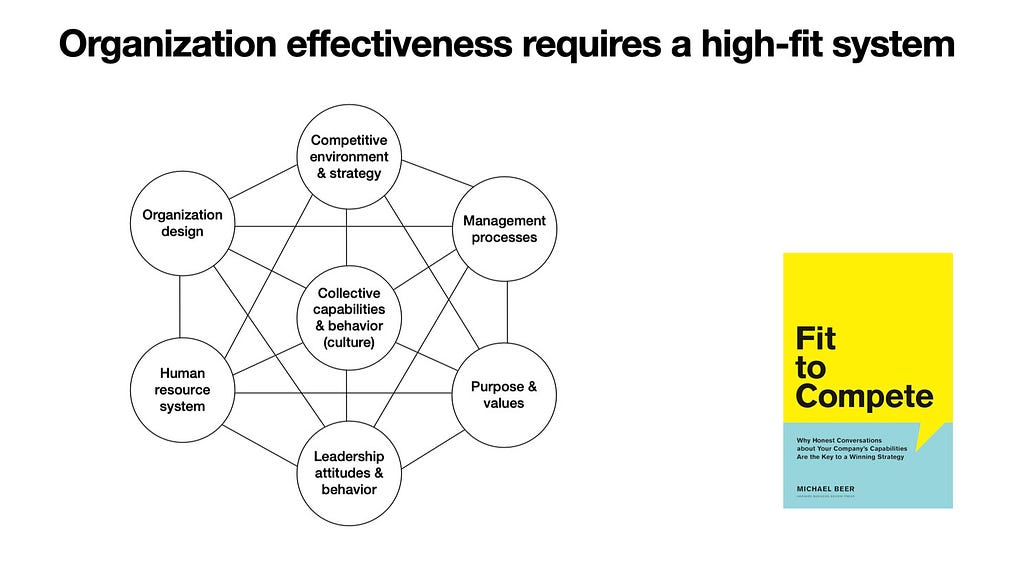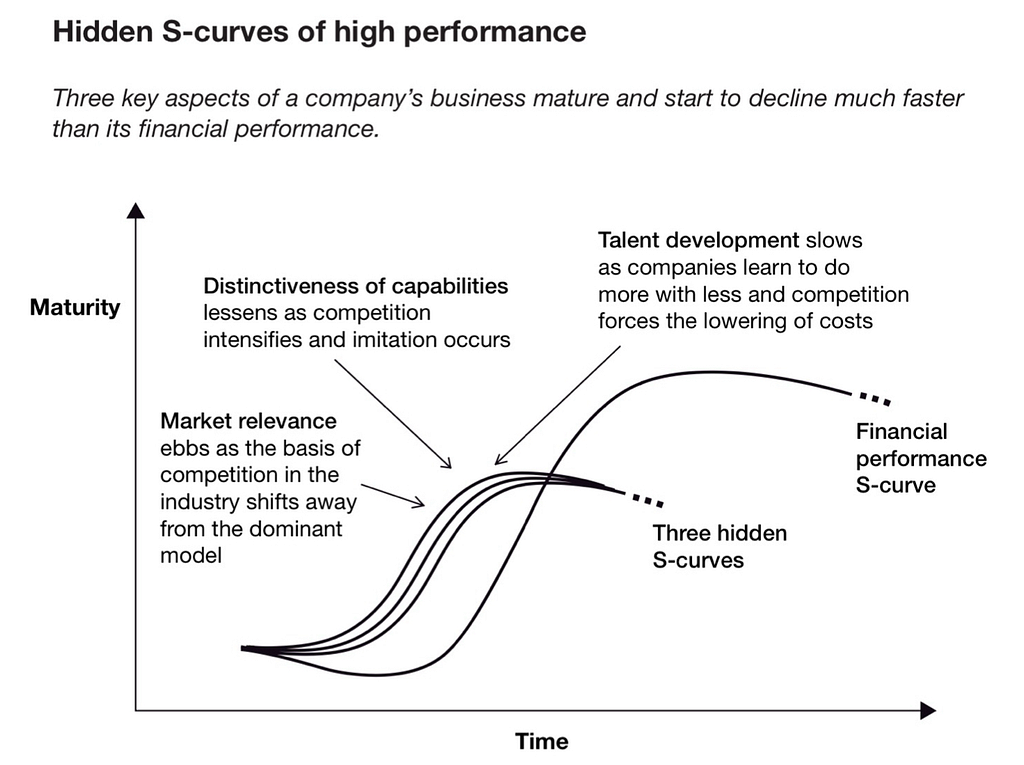“The alignment, or congruence, between strategy and four organisational building blocks: critical tasks and workflows, formal organisational arrangements, people, and culture drive today’s success. Incongruence, a lack of alignment, or inconsistencies among these elements is almost always at the root of today’s performance gaps.” — Michael Tushman and Charles O’Reilly
Several years post-retirement from rugby, I encountered former Ireland Rugby coach Eddie O’Sullivan. I sought his involvement in some leadership development workshops I was designing and to address a lingering question regarding my rugby career. Eddie had chosen me for my sole international appearance for Ireland (known as a cap). My only cap is something I initially felt embarrassed about. However, two perspectives changed my view.
First, a friend reminded me of the rarity of achieving an Ireland cap, noting I was the 978th cap in a list that, as of February 7, 2024, totals 1,156 players.
The second is what Eddie said to me over breakfast that day…
Me: “Eddie, this has been bugging me for a long time and I need to ask you a question.
Eddie (somewhat intrigued): Go on.
Me: Is there anything else I could have done to get more caps? Equally, was there anything I shouldn’t have done (referring to me leaving Ireland on two occasions to play for Dax and later for Toulouse. National coaches maintain a policy of not selecting players who don’t play in their native country.)?
Eddie (clearing his throat): Aidan, there are 3 kinds of players. There is a disciplined player. Then, there is a talented player. Finally, there is a third type of player, this is the goal of the coach, to make the talented player disciplined.”
(Looking at me with a wry smile) You, my friend, were amazingly disciplined.
We both paused a moment and then erupted with laughter.
It was exactly what I needed to hear. Eddie commended my discipline, providing reassurance that despite my efforts, external factors like injuries and timing often dictate career outcomes. I felt comforted in the fact that I had controlled every input possible, but even then you can’t control the output. But knowing you gave it everything means you can walk away without regrets. This “capability cap” was the last piece of the puzzle.
It was always my suspicion. You see, I was a very average athlete, I was often last picked, if at all in the playground and it wasn’t until I was in my late teens that I started to surpass players who were hitherto much better than me. I had a formula. Hard work, diet, sleep, sacrifice and belief pay off. I was 17 and 5 years later was playing for Leinster and Ireland a year after.
You often see this phenomenon play out when you enter a professional environment like when I joined Leinster. So many schoolboy heroes (which I never was) crumpled when they became professionals. The problem? They had never developed discipline and had always relied on pure talent. Now that they were surrounded by a majority of disciplined and talented players and (ahem) some “amazingly disciplined” ones, they struggled. Their failure was often my gain.
However, this “amazing discipline” or “talent gap” means that as the team or sport progresses, a “capability cap” will eventually become apparent. This is not unique to sport. A critical aspect of organisational success is the alignment between strategic ambition and operational capability. This concept emphasises the need for companies to not only set ambitious goals but also to possess or develop the necessary capabilities, resources, and culture to execute these goals. Before we explore let me share another sporting experience.
I am grateful to have played for the top 2 clubs in Europe, Leinster and Toulouse. When I began in Leinster, the coach had a certain game plan in mind. This was his strategic ambition. For the team to be able to achieve that ambition, we had to build adequate skills: passing the ball in contact, adequate power to break tackles and speed, agility and quickness to evade defenders (to name just a few). Indeed, we soon understood the correlation between these skills in training and the payoff on the pitch.
Later, when I played for Toulouse, our off-field training was very different from the training we did at Leinster. We did a lot of Judo, evasion skills and long-distance running. The Toulouse style of play was very different from Leinster’s, it required the players to be extremely aerobically fit to achieve the style of play (strategic ambition) set by the club’s leadership.
If either club changed their strategic direction, it would also require updated capabilities to deliver those ambitions. As a highly disciplined player, as Eddie confirmed, I had a cap on how far I could go. My journey illustrated the shift from talent to the discipline necessary for elite success at the professional level. The concept of a “capability cap” resonated with me, highlighting the limits of discipline without innate talent. For the best clubs to remain the best they need both talented and disciplined players. Yes, a player like me could fill in the gaps and maybe benefit from injuries or a coach who backed you, but would always remain somewhat limited.
Today, the rugby world has progressed so far, that these clubs have a conveyor belt of talent feeding a seamless supply of capability to deliver their ambitions.
We see the same phenomena play out in the business field.
Is Your Strategy Writing Checks, Your Capability Can’t Cash?
Son, your ego is writing checks (cheques) your body can’t cash.” — Commander Tom “Stinger” Jardian, from the movie Top Gun
In the high-octane world of corporate strategy, ambition fuels progress. However, a lesson often overlooked, yet brilliantly encapsulated in the iconic movie “Top Gun,” is the peril of writing (strategic) cheques your (corporate) body can’t cash. This cinematic wisdom serves as a powerful metaphor for the corporate realm, where the alignment — or misalignment — between strategic ambitions and operational capabilities determines an organisation’s trajectory towards success or failure. The disconnect between what a corporation aspires to achieve and what it can realistically execute is a treacherous pitfall. It’s akin to a pilot attempting a manoeuvre beyond their skillset or aircraft’s capabilities, risking catastrophic failure.
Before embarking on a strategic (flight) path, any organisation must conduct a pre-flight check: an assessment of its operational “fitness”. We must conduct an honest appraisal of internal resources and capabilities as the foundation of strategic feasibility. (Ok enough with the Top Gun references).
In our current series on The Innovation Show with Mike Beer, we discuss his Strategic Fitness Process (SFP). The SFP is a framework for facilitating honest, open conversations within organisations for achieving strategic alignment and operational effectiveness (perhaps Eddie O’Sullivan had read the book).
A critical role of this work is to identify shortfalls between ambition and capabilities. The ultimate goal is to align an organisation’s structure, culture, management practices and capabilities with its strategic goals. This creates congruence or what Mike calls, “Strategic Fitness”. In this respect, fitness refers to both the presence of desired capabilities and fitness (like the fit of a glove) as the alignment of ambition and structure, skills and culture.

In a recent series on The Innovation Show with Paul Nunes, former director of Research for Accenture, Paul exposes several factors leading to organisational decline. It is not just waning market relevance or decreasing distinctiveness, but a major factor is lagging talent development as companies learn to do more with less and competition forces the lowering of investments in training and development. Furthermore, companies neglect developing distinctive capabilities for the future, focusing instead on what appears to be driving higher performance today.
The most important point is this: these hidden curves of a company’s business mature and decline much faster than its financial performance and they often remain hidden until it is too late.
As we explored earlier with any strategic ambition, if the opportunities are beyond an organisation’s capabilities, leaders will soon discover that they have bitten off more than they can chew. A strategic ambition must still be a stretch but still manageable, always considering the extent of an organisation’s capabilities.
Of all these hidden S-curves, the talent development curve is the toughest to detect. Consider why: Intuition suggests that talent growth in companies will grow roughly in proportion to revenue growth. What usually happens is very different. As businesses succeed, they require fewer expensive managers and experts per capita. A focus on continuous cost reductions means less focus on new capability development and more focus on capability optimisation.

Cultivating Capabilities for Strategic Ambitions

To bridge the gap between ambition and capability, organisations must invest in building and sustaining the requisite skills, technologies, and processes. This involves not only talent acquisition and development but also fostering a culture of innovation, adaptability, and continuous improvement. Leadership plays a pivotal role in this endeavour, steering the organisation towards an ambitious north star while ensuring it remains grounded in today’s operational reality.
To avoid the problems a waning talent S-curve creates, consider research done by Paul Nunes and his team at Accenture (for the 2011 book, “Jumping the S-Curve). The findings reveal that companies need more than just a sufficient amount of talent; they need a surplus of talent (akin to an academy in a sports team, which both Toulouse and Leinster meticulously maintain). Many executives might view this statement with great scepticism. After all, isn’t it difficult enough to find all the necessary talent — let alone a surplus of it — to keep a business running? However, At the time of Paul’s research, Paul discovered that high performers like Procter & Gamble consistently maintained deep benches of excess talent through both good times and bad.
A Deep Bench

Through its formal program Build from Within, P&G maintained three qualified candidates waiting in the wings for every one of its top fifty important positions. When A. G. Lafley was head of P&G, he once remarked, “If I get on a plane next week and it goes down, there will be somebody in this seat the next morning.” And if Lafley had suffered such an unfortunate fate, the person replacing him would have been a fellow P&G person.
Thanks to the company’s extensive and up-to-date database that tracks more than 100,000 employees, P&G could react quickly to any unexpected departure of talent. Moheet Nagrath, (former) CHRO at P&G added, “If you train people to work in different countries and businesses, you develop a deep bench.” And by “deep bench,” P&G means several layers deep. As Nagrath said, “I could show you the next generation of successors to current leaders, the generation after that, and the generation after that.”
The journey from strategic ambition to achievement is fraught with challenges, yet it is the essence of corporate progress. The key to navigating this journey successfully lies in ensuring strategic congruence — aligning ambitious goals with the robustness of organisational capabilities and personnel. To remain a “Top Gun,” companies must avoid the peril of writing strategic checks the corporate body can’t cash.
THANKS FOR READING
Don’t forget we have a premium member event on the 14th Feb at 11 am EST, 4 pm Ireland time with Paul Nunes.

For more on this concept of “Organisational Fitness”, join the brilliant Mike Beer for part 2 of “Fit to Compete” and we have a copy of the book up for grabs. To be in with a chance of winning that book, sign up to our substack and tell us you want to be in the hat to win.
The Capability Cap: Is Your Strategy Writing Cheques, Your (Corporate) Body Can’t Cash? was originally published in The Thursday Thought on Medium, where people are continuing the conversation by highlighting and responding to this story.